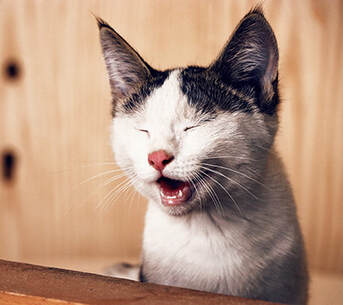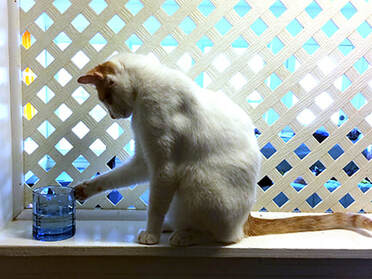
Problems affecting a cat’s lower urinary tract may prevent the bladder from emptying correctly or may even cause a fatal blockage of the urethra, the tube that connects the bladder to the outside of the cat’s body.
All too often, the cause is Feline Lower Urinary Tract Disease (FLUTD). Symptoms include frequent or painful urination, bloody urine and frequent licking of the urinary opening. Essential in treating FLUTD is first determining the cause of it, which may include such endocrine diseases as hyperthyroidism and diabetes mellitus as well as bladder stones, urinary tract blockages, infection or cancer. If the cause can’t be determined, the cat is considered to have cystitis (inflammation of the bladder).
The causes of FLUTD include: stones, crystals or accumulated debris in the bladder or urethra; a urethral plug (accumulated debris from urine); bladder inflammation or infection; incontinence from excessive water drinking or weak bladder; injury to, or tumor in the urinary tract; stress; spinal cord problems and a congenital abnormality. Rarely seen in cats younger than a year, the average age is typically four years, with males being more prone to urethral blockages due to their narrower urethras.
Signs your cat is having problems with his/her urinary tract include: the inability to urinate or passing only a small amount of urine; bloody or cloudy urine; loss of bladder control and/or dribbling urine; increased frequency of urination or visits to the litter box; straining and/or crying out in pain when attempting to pass urine; prolonged squatting in the litter box; fear/avoidance of the litter box and soiling in inappropriate places; constant licking of the urinary opening; a strong odor of ammonia in the urine; lethargy; vomiting; increased water consumption, and a hard, distended abdomen.
If your kitty is either straining to urinate or crying out in pain, see your veterinarian immediately. This could be a medical emergency!
To diagnose a lower urinary tract problem, your vet should perform a complete physical examination that includes a urinalysis, urine culture and blood work, and if necessary, x-rays and/or an ultrasound.
Depending on the ultimate diagnosis, your vet may recommend one or more of the following courses of action: antibiotics or other medications, dietary changes, increase in water intake and urinary acidifiers; aids in expelling any small stones through the urethra; surgery to remove bladder stones or a tumor or to correct a congenital abnormality; a urinary catheter or surgery to remove a urethral blockage in male cats, and fluid therapy.
If left untreated, urinary problems can cause a partial or complete obstruction of the urethra. This, in turn, can quickly lead to kidney failure and/or rupture of the bladder, which can prove fatal.










 RSS Feed
RSS Feed